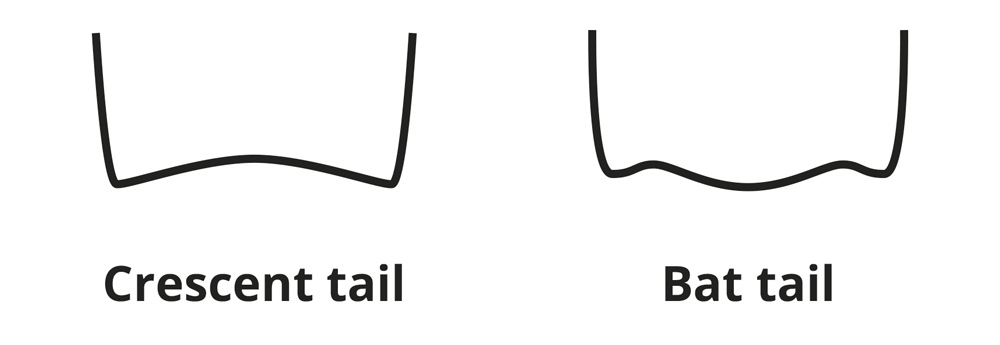Purchasing a Bodyboard

Once you've decided to purchase a bodyboard, there are numerous factors to take into account. Here is a well-organised and clear guide on the key features to evaluate.
1. Selecting the Core
The core is essentially the fundamental material used for the board's body. It's composed of foam, available in three variations—ESP, PE, and PP. Each boasts distinct traits regarding water temperature, wave size, rider's dimensions, skill level, and more. Below is a brief comparison of the three types.
ESP - Expanded Polystyrene
- Allows diverse shapes, designs, and a unique flex pattern
- Offers good cushioning for elbows and hips
- More affordable than PE and PP
- Ideal for beginners
- Excellent buoyancy and lightweight
- Less robust than PE and PP, so look for approximately 50-55 mm thickness for added strength
PE - Polyethylene
- The original and most common bodyboard core
- Provides flexibility with near-instant feedback to the rider
- Permits greater control
- Performs better in cooler water
- Suitable for larger waves
PP - Polypropylene
- Outstanding all-around board
- Stiffer than PE yet lightweight and stronger
- Entirely waterproof
- Excels in warm waters and conditions
- Perfect for big waves and complex manoeuvres
- Beaded PP enhances flex and buoyancy
- Extruded PP increases rigidity and speed
When we mention flex, it denotes the extent to which the board bends under external pressure (e.g., waves) and how it springs back. A more flexible board responds better to water conditions, whereas less flexibility implies it's stiffer but faster.
2. Selecting the Slicks (Skins)
Slicks, known as skins, are the materials covering the board's underside, the section directly touching the water. Two types of slicks exist: Surlyn Slicks and HDPE Slicks:
- HDPE slicks refer to high-density polyethylene slicks; a strong material with low resistance, enhancing speed. Usually cheaper compared to Surlyn, HDPE is mostly found in beginners' boards.
- Surlyn slicks provide a rubber-esque surface, offering optimal responsiveness and flexibility since it can revert to its original shape after pressure. Favoured by bodyboarders, it is more costly than HDPE but delivers superior performance.
3. Selecting the Deck
The deck is the board's top surface where you position your body while riding waves. There are three options to choose from: PE, XPE, and IXPE. Below is a comparison of the three:
PE - Polyethylene
- Excellent padding for the rider
- Dents form more easily as it doesn't revert to its original shape
- Soft and flexible
XPE - Cross-linked, cross-cell
- Great water resistance due to its closed structure
- Smooth appearance but requires additional wax for traction
- Stiffer than PE and IXPE
IXPE - Cross-linked, open-cell
- Less likely to compromise the board's flex and rebound
- Extra rigid with excellent strength due to higher density
- Softer than XPE, providing a rougher texture for better grip
Deck choice often comes down to personal preference and riding style—whether desiring a softer feel, a sleeker appearance, or a longer-lasting deck without creases, the decision is yours.
4. Choosing the Tail Shape
Two primary tail shapes exist for bodyboards, each having several variations. Both cater to all rider levels and primarily depend on your preferences and riding conditions.

- Crescent tail offers a well-rounded option for various conditions. It ensures a firm grip on the wave, and facilitates positioning of the hips on the board for catching waves or paddling out;
- Bat tail is more suited for weaker surf conditions and/or unpredictable waves owing to its increased buoyancy. This also makes it an excellent choice for heavier riders. The extra flotation also contributes to greater speed, though it might give a looser feel at the board's tail.
5. Choosing the Size
Selecting the appropriate board size is crucial for bodyboards. Besides your height, the size choice depends on the type of waves you will be riding. With larger waves, you need the control and manoeuvrability of a smaller board. In weaker conditions, the floatability of larger boards proves advantageous.
However, ensuring the board fits your height and weight is vital! If it's too long, your knees might hit the tail while paddling with fins. Conversely, a board that's too small won't provide sufficient buoyancy. Adjust buoyancy without changing the board length by choosing a wider/narrower board.
To determine the necessary board size, you can measure:
- The distance from the ground to your belly button;
- The distance between your chin and knees;
These numbers aren't necessarily identical but are closely matched, providing a good indicator of an appropriate board length.
6. Finally - the Fins/Flippers
In bodyboarding, fins or flippers aren't merely an accessory but essential. Fins used in bodyboarding differ from regular swimming fins. Typically shorter, wider, and stiffer, they enable you to accelerate to catch waves and manoeuvre without hindrance from the flippers.
There are numerous variants, from materials to shapes, but it's crucial to obtain bodyboard-specific fins that are comfortable and fit well.
Bodyboard and Enjoy!
Now that you understand the fundamentals, you can search and select the board best suited for you. If uncertain, rest assured there will always be additional questions and information, so feel free to contact us.
